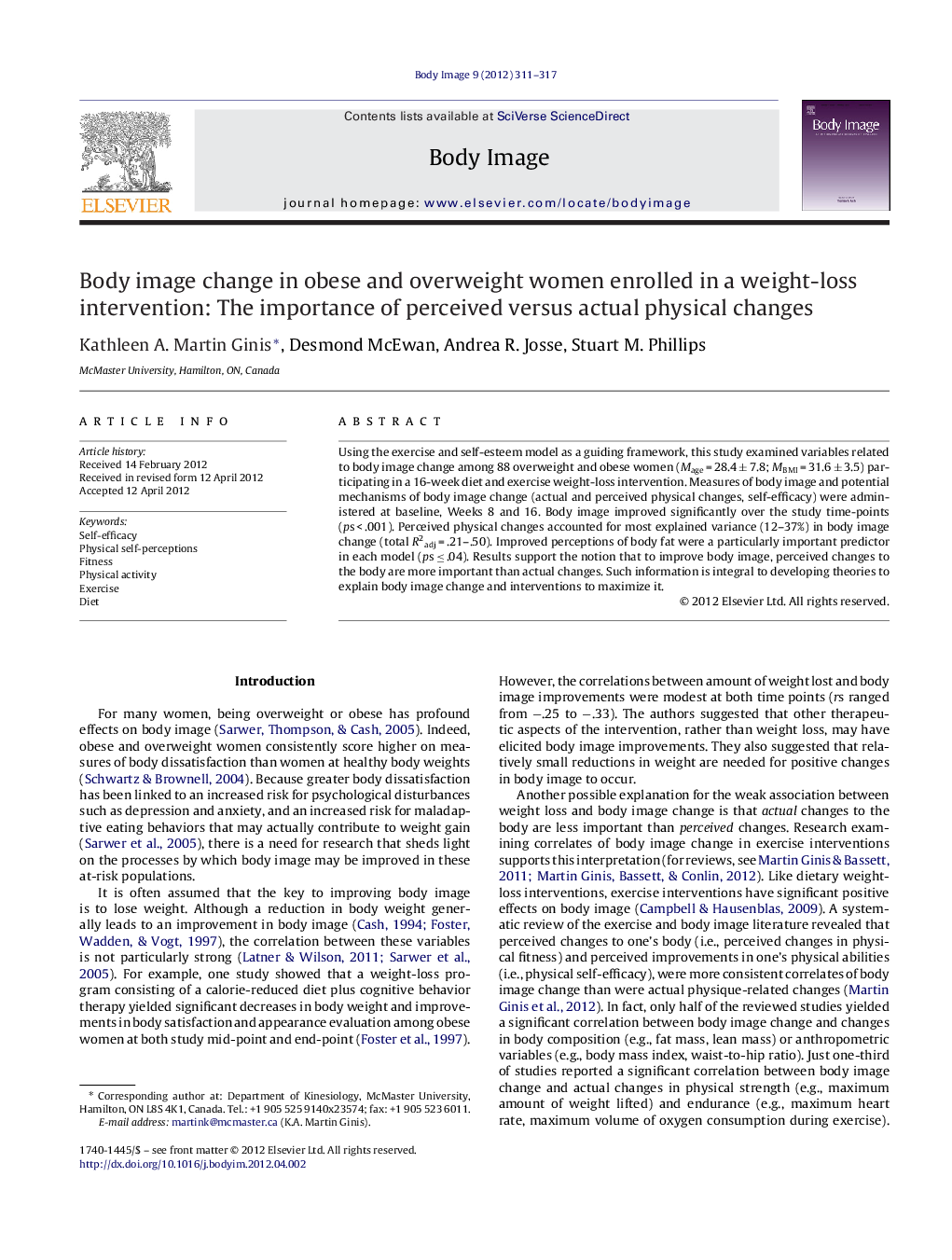| Article ID | Journal | Published Year | Pages | File Type |
|---|---|---|---|---|
| 902947 | Body Image | 2012 | 7 Pages |
Using the exercise and self-esteem model as a guiding framework, this study examined variables related to body image change among 88 overweight and obese women (Mage = 28.4 ± 7.8; MBMI = 31.6 ± 3.5) participating in a 16-week diet and exercise weight-loss intervention. Measures of body image and potential mechanisms of body image change (actual and perceived physical changes, self-efficacy) were administered at baseline, Weeks 8 and 16. Body image improved significantly over the study time-points (ps < .001). Perceived physical changes accounted for most explained variance (12–37%) in body image change (total R2adj = .21–.50). Improved perceptions of body fat were a particularly important predictor in each model (ps ≤ .04). Results support the notion that to improve body image, perceived changes to the body are more important than actual changes. Such information is integral to developing theories to explain body image change and interventions to maximize it.
► Changes in body image were assessed at Weeks 8 and 16 of an exercise and diet weight-loss intervention for overweight and obese women. ► Body image increased significantly at both time-points. ► Perceived changes and self-efficacy changes explained variance in body image change beyond that explained by actual physical changes. ► Perceived changes in body fat were a particularly important predictor of body image change. ► In the context of a weight-loss intervention, perceived changes play a stronger role in body image change than actual physical change.
